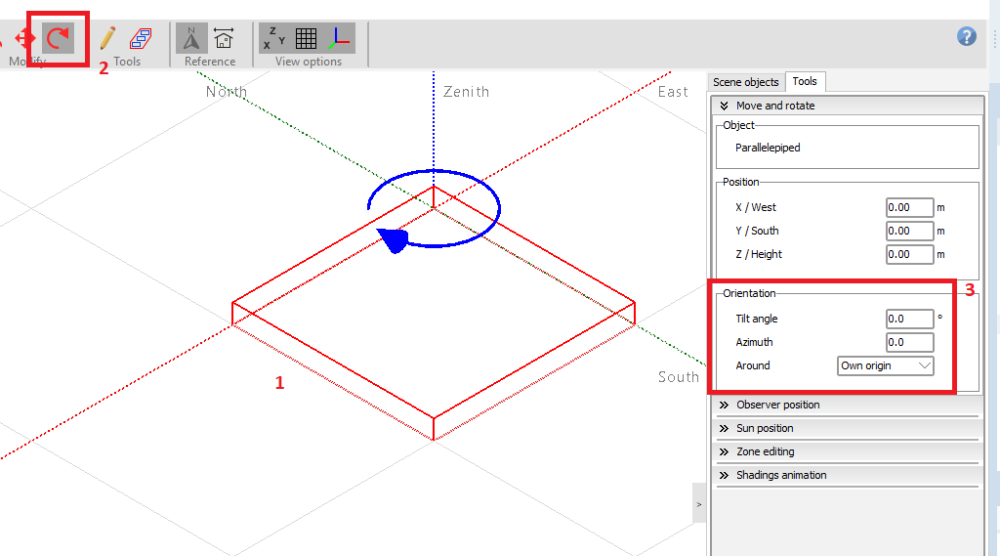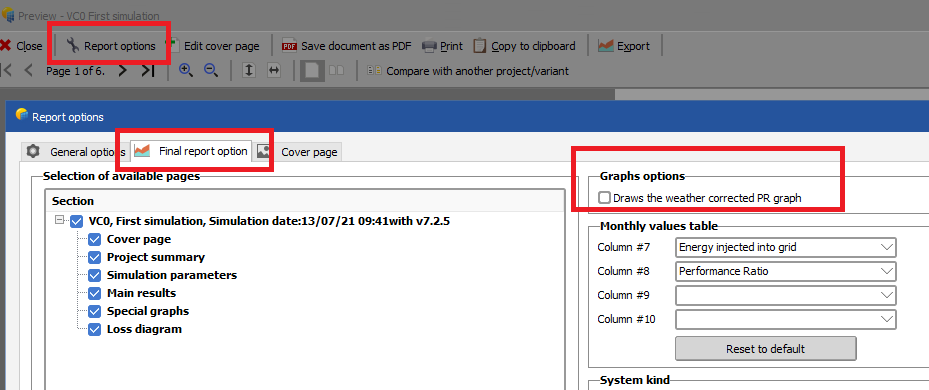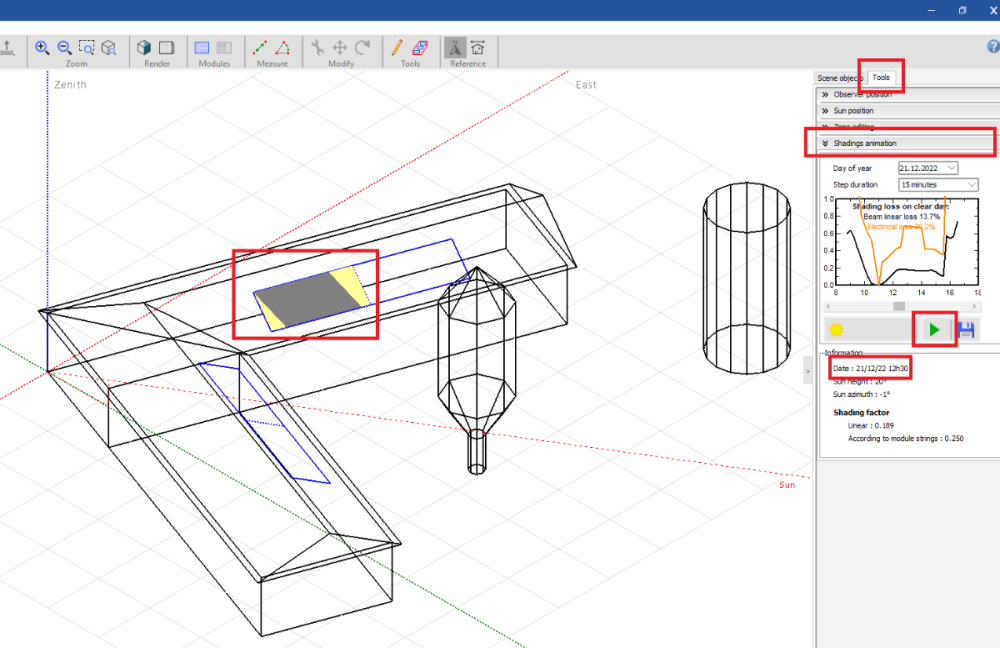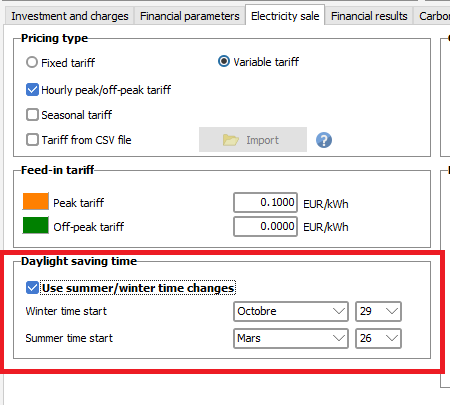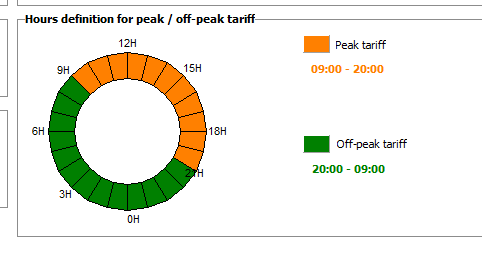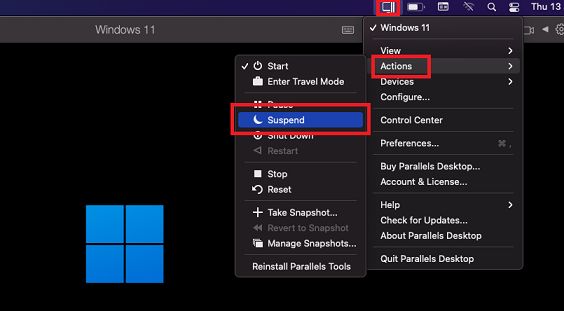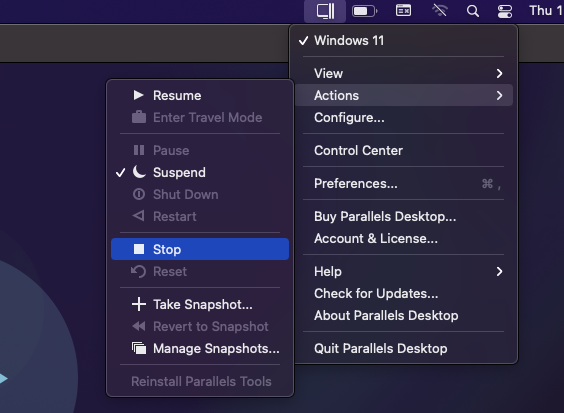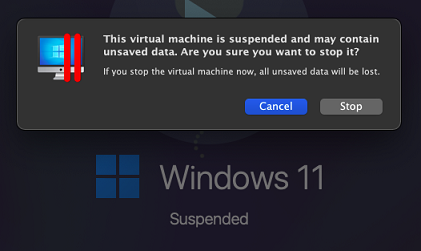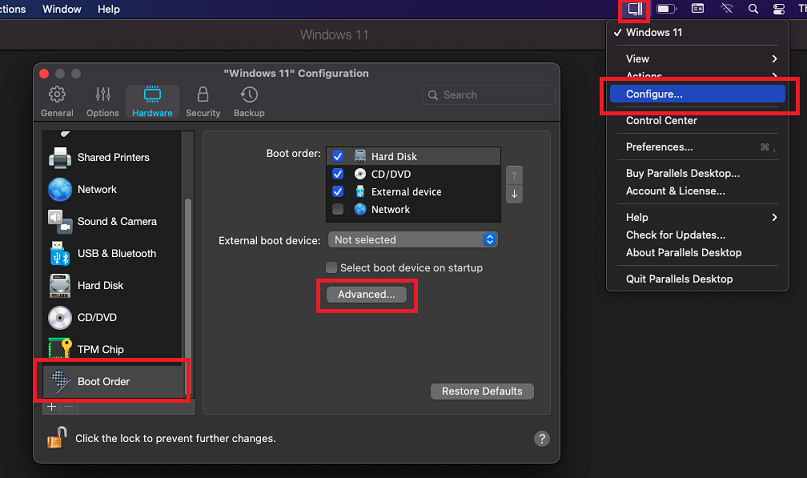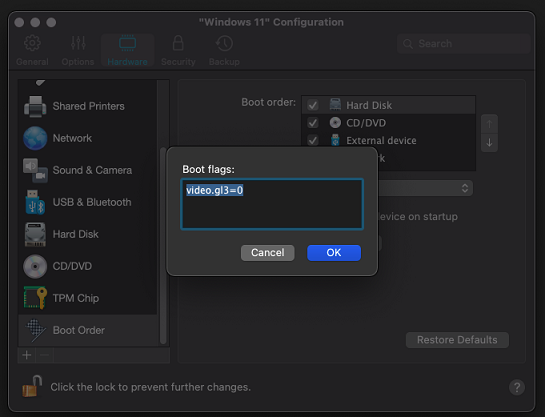-
Posts
136 -
Joined
-
Last visited
Everything posted by Hizir Apaydin
-

Is it possible to start PVSYST and do simulations using a script?
Hizir Apaydin replied to RobSolar's topic in How-to
Dear RobSolar, There is no possibility to run simulations from a script. However you can automate running multiple simulations from an excel file using the batch mode. You can find more information about this feature in the links below: https://www.pvsyst.com/help/index.html?batch_mode.htm Regards -

Template which contains all the info for same type of projetcs.
Hizir Apaydin replied to ShivamPandey's topic in Suggestions
Dear Shivam, You can edit the list of clients from the project main dialog. But there is no template system for setting information common to several clients. It's not possible to template the list of report pages specifically for some clients. From the report dialog, you can check as "default" in the menu "Report options>Final report option". Then the selected list of pages will be common to all clients. Regards. -

What is the use of the client on project page
Hizir Apaydin replied to ShivamPandey's topic in How-to
Dear Shivam, It corresponds to the customer for whom you are implementing the photovoltaic system and it can be displayed in the final report from the report options. You can manage a list of different clients for different projects. Regards -
Hi, The formula for Cumulative profit is Own funds + After tax profit + Self consumption savings So, for year 1 in your example, it should be -772680 + 73 384 + 167371 = -531 925. However, the discount rate is also taken into account in order to update the value of your money. That's why your result for year 1 is -543 389 (as your money value decreases due to discount rate, the real value of your cumulative profit in "today's" value is lower). Regarding % payback column, the formula is Total Payback / Total Investment, where Total Payback = Own funds + After tax profit + Self consumption savings + Capital repayment of Loan (only the capital part, not the interest part), and Total Investment is the investment cost defined in first tab of the economic evaluation. This formula also takes into account the discount rate. Indeed, the capital part repaid for the loan is taken into account, this answers your remark regarding the loan with fixed annuity. So the difference between Cumulative Profit and Total Payback, is that Total Payback takes into account the capital part of the loan as an amortization. The cumulative profit does not take into account the repayment of the capital part of the loan, as it's not an external profit. This mainly explains why your amortized percentage does not equal 100% right away when your cumulative profit becomes positive. In order to have more detailed explanation specific to your project, we should know your total initial investment value and the defined discount rate in Financial parameters tab. You can export and send us your project for a more detailed analysis (PVsyst main menu File>Export project) Regards.
-
Dear Vera, The albedo you have defined in "Project settings" correspond to the general albedo of your location, impacting your modules yield. However, for bifacial modules, there is also the albedo just under the modules and this value is used only for the back face yield calculation. Values for this albedo are defined in "System>Bifacial system" definition dialog. In the report, both albedo values are available: Global albedo of the project is available in "Project summary" section, "Monthly albedo values" table Albedo under the modules used for bifacial production calculation is available in "General parameters" section, "Monthly ground albedo values" table. Regards.
-
Dear passakorn, There are several conditions for showing "Nb. of sheds" and "Sizes": - there should be more than 1 table in the scene - RMS (root mean square) of average width of the tables in the orientation should be lower than 0.1 For more details, please export (PVsyst main menu <File><Export project> and send your project to support@pvsyst.com Regards.
-
Dear Sheriif, It's not possible to get the hourly values in the printed report. Hourly values can be only exported in CSV file. Did you follow the procedure describe in the provided link https://www.pvsyst.com/help/output_file.htm ? Regards.
-
Dear Sheriif, 1. You can generate hourly values output from the simulation, by following the steps described in our help page: https://www.pvsyst.com/help/output_file.htm 2. This video tutorial on the economic evaluation tool explains step by step the financial modelling : 3. This video tutorial describes the steps to calculate the carbon balance of your project : Regards
-
Dear Siebe, We suggest you to directly report your issue by email to support@pvsyst.com, by providing the project file for which you have the generation issue. You can export your project from menu <File><Export projects> Regards
-
Dear Ananthu, The reason for this error message is that you have defined a subarray of 220kWp (982m2) for Orientation 4 in system dialog, whereas the size of your tables in the 3D scene for this orientation is 142m2. You have to increase the size of the tables in the 3D scene for Orientation 4 to 982m2, or reduce the size of your subarray for Orientation 4 in system window to 142m2 in order to have a matching. You have a similar problem with Orientation 7 (see message in red in your screenshot). The size of the subarray defined in system window for this orientation is not matching the size of the corresponding tables in the 3D scene. Regards.
-
Dear Arnon, You are kindly requested to export and send your log files to support@pvsyst.com (menu "File>Export logs"). Regards
-
Dear Michalis, After adding the object to the 3D scene, you can select it, then click on rotate icon and set its tilt and azimuth as shown below: Regards
-
Dear Michalis, Yes this is correct. The pitch corresponds to distance between counterpart points of two tables of the same field. Regards
-

Realistic view - bold buildings
Hizir Apaydin replied to Michalis Angeli's topic in Shadings and tracking
Dear Michalis, After switching to "Realistic view" in the 3D scene, you can save the view for the report as shown below: Then it will appear in the report in realistic view. Regards. -

How to select/display PR corrected in the PV report?
Hizir Apaydin replied to zing223's topic in How-to
Dear sir, Please find below a screenshot showing how to edit this option: By the way, we highly recommend you to use the latest version of PVsyst, which is 7.4.2, in order to have the last improvements and bug fixes. Regards Hizir. -
Dear Biljana, These options have been removed since PVsyst 7.2.4 (06/07/2021) because they were redundant with "Automatic altitude" You can select your PV tables and use "Tools>Automatic altitude" (or just right-click on the tables in the "Scene objects" list to see this option) Regards
-

PV Panels are going underneath the Topo
Hizir Apaydin replied to Muhammad Ubaid Ur Rehman's topic in How-to
Dear sir, Which version of PVsyst are you using and what is the format of the file imported into PVsyst? For a more advanced investigation, you can export and send your project files to support@pvsyst.com Regards -
Dear Martin, Indeed there seems to be an issue. Could you please export your project (PVsyst main menu "File>Export project") and send it to support@pvsyst.com so that we may investigate more in detail your issue. Regards
-
Dear Andreza, With the shading animation tool you can see the progress of shadings on your panels during a specific day of the year. If you have defined the table partitioning in the 3D scene or the module/string attribution in the module layout, you will see them on the animation. Regards
-

Solar time or legal time in hourly values?
Hizir Apaydin replied to RicardoMoreno's topic in Simulations
Dear Ricardo, The basic reference time used in PVsyst is the legal time, which usually corresponds to the Winter Time of the country. You can have more information about the time definition in PVsyst in this link: https://www.pvsyst.com/help/time_definition.htm This means that the hour selection for the pricing in the economic evaluation tool correspond to your local legal clock, you don't have to perform any manual shift: However, to take into account the time difference due to the transition to summer time, you have to set the time change dates in "Daylight saving time" of the economic evaluation as this information is not available in PVsyst and can be different for each country of the world. Thus PVsyst will automatically perform the one hour shift after this date and the correct hour will be taken into account for the pricing.- 1 reply
-
- hourlydata
- export
-
(and 3 more)
Tagged with:
-
Dear Luca, The simulation duration is displayed only when performing the simulation, this information is not stored / saved in the application. Regards.
-

Error shading animation- an error occcurred in pvsyst
Hizir Apaydin replied to Defin's topic in Shadings and tracking
Dear Defin, Could you please save and send the bug report to support@pvsyst.com so that we may investigate your issue. Regards -
While PVsyst is designed to run only on Windows operating systems, it's possible to emulate Windows on Mac environment through Parallels Desktop and run PVsyst on it. However, some OpenGL driver issues on Parallels Desktop application cause Windows shutting down when generating the report in PVsyst. This issue appeared inversion 7.3.3 of PVsyst, when some new features have been added to the single line diagram generation. The problem is related to the virtualization environment and its drivers, as it does not occur on standard Windows machines. In order to fix this issue and correctly generate the report in PVsyst, it's possible to disable the use of Open GL 3 on Parallels Desktop by following the below procedure: 1. Start Windows on Parallels Desktop 2. Suspend Windows from the Parallels configuration menu in the Mac top toolbar 3. Stop Windows from the same menu 4. Confirm by clicking on Stop 5. Click Configure, Boot Order, then Advanced 6. Set video.gl3=0 in Boot flags area and click on OK 7. Restart Windows in Parallels Desktop and run PVsyst. The report should now generate correctly, without causing Windows to shut down
-

PVC import not considering module layout
Hizir Apaydin replied to dennis.stu's topic in Problems / Bugs
Dear Dennis, Could you please send your PVC file to support@pvsyst.com and describe in detail the issue so that we may investigate. Regards


